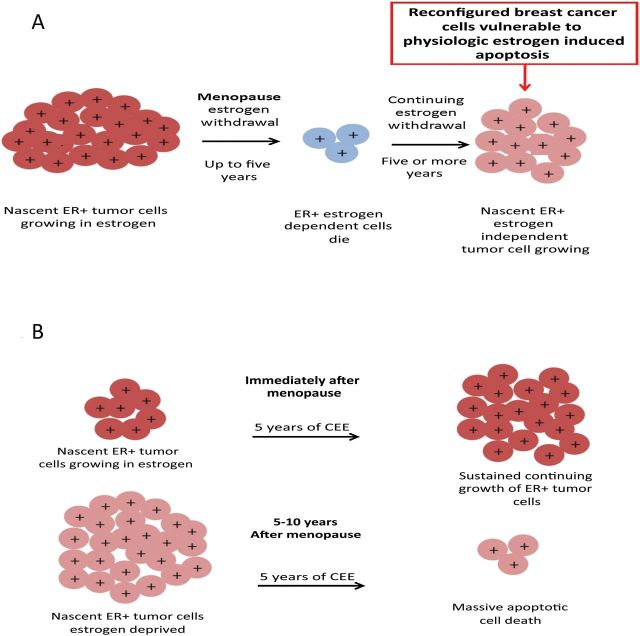Figure 2.
The success of estrogen replacement therapy to reduce the risk of breast cancer is dependent on the menopausal state of a woman. A) Immediate estrogen withdrawal at menopause in postmenopausal women causes ER-positive estrogen-dependent cells to die but ultimately some cells continue to grow independent of estrogen. B) Treatment of women immediately after menopause with conjugated equine estrogen results in sustained growth of nascent ER-positive tumors, whereas treatment five years after menopause causes apoptotic cell death (reproduced with permission) (79). Additional support for this model comes from the Million Women Study (100); but numbers of breast cancer are too few at the relevant ages to arrive at a firm conclusion. By contrast, the pioneering work of Sir Alexander Haddow, FRS (77), first noted that a gap of five years was necessary for high-dose estrogen therapy to be successful at a 30% response rate. Patients treated nearer the menopause were unresponsive to high-dose therapy. A period of estrogen deprivation was required prior to successful high-dose treatment for metastatic breast cancer. Stoll (78) confirmed this requirement in his own practice with a response rate of metastatic breast cancer to high-dose estrogen of 9% for patients within five years of the menopause but 35% for patients after the five-year gap period. ER = estroger receptor; CEE = conjugated equine estrogen.

